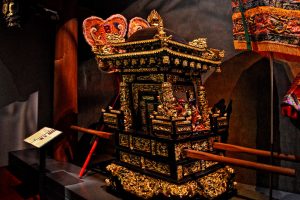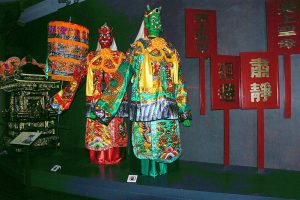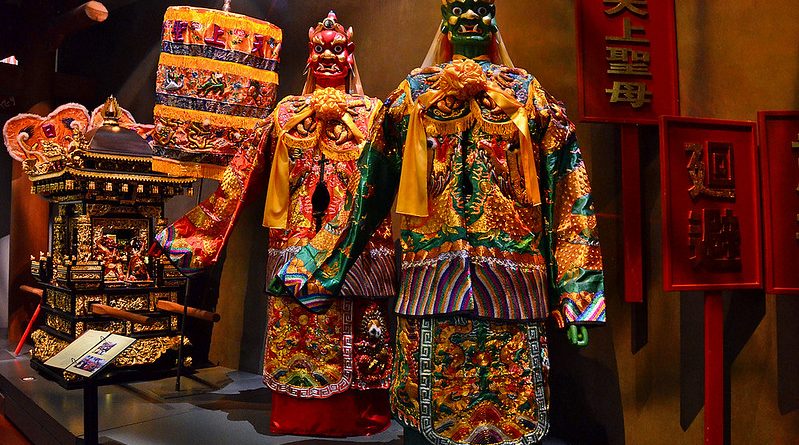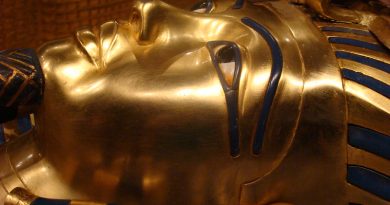Mazu Goddess of The Sea Festival
Festival Essentials
Where: Across Southern China and Taiwan, centred around the main temple in Meizhou Island, Fujian Province, South-East China
When: 23rd day of third lunar month (usually April), and ninth day of ninth lunar month (usually October)
What happens: Shaolin daredevils, dancing girls and depictions of the goddess Mazu in puppet form, followed by a belching procession!
Who is Mazu?
Mazu, the goddess of the sea, is one of the most loved of all goddesses in Chinese mythology. Also known as Ma-Tsu, A-ma, Tianhou, Motherly Matriarch, Kuan Yin of the Southern Sea, Daughter of the Dragon, and Empress of Heaven, it is said that if you call but one of her names she will appear to help you. If you call her as Empress of Heaven she will be delayed coming to your aid by having to dress in her finery!
She is thought to have been born as Lin Mo Naing. Her mother prayed to the goddess Kuan Yin to provide her with a daughter. Lin Naing was born with a flash of light. She did not cry in her first year and she was a very intelligent young girl with a photographic memory. She first learnt the art of healing then trained as a Buddhist, and later Taoist monk, while training in the martial arts. When she was older she gained her second sight standing in front of a statue of Kuan Yin who imbued her with the power to see in to the future. A second theory is that a sea serpent leapt out of the water as she was standing with a group of friends and presented them with a gold disc. The others ran off, but Lin Naing calmly accepted it and with it she gained her powers.
It is the miracles she performed for seafarers for which she is best known. She would present herself in red before captains and sailors when she knew that the weather was taking a terrible turn for the worst and prevent them from sailing to their deaths. The most well-known miracle that she performed involved her brother and father. As she sat weaving at home she was suddenly transported out to sea where her family had been washed from their boat and were about to drown. She first lifted her brother back to safety, but as she was rescuing her father, her mother awoke Lin Naing from her trance and he fell back into the sea and drowned.
Two men were said to have fallen in love with Mazu, General Chien-li-yen (Eyes that See a Thousand Miles) and General Shun Feng Erh (Ears that Can Hear the Wind). She told them that she would fight both of them and whoever won she would marry. If they lost they would be at her service for evermore. She killed them both with her exceptional martial arts skills.
At the age of 28 she announced that it was her time to leave and walked to the top of a hill, where she became enwrapped in a cloud and mist that transported her up to heaven. Where she had stood, a rainbow appeared that is associated with the dragon in Chinese legend. Dragons bring good luck and also unite the sea and the air.
Over the last millennia her title has been raised in status no less than twenty times. She has 100 million devotees and there are over 1,500 temples devoted to her.
Mazu’s Birthday Party
In April, on the 23rd day of the third lunar month, thousands of people pay their homage in a celebration dedicated to Mazu’s birthday, and in October, on the ninth day of the ninth lunar month, her death anniversary. The exact date of this festival is dependent on the lunar calendar. They are both extraordinary festivals that are well worth trying to catch.

On Mazu’s main temple on Meizhou Island (one hour by bus and boat from Putian), Fujian Province, thousands make the pilgrimage from Taiwan to Fujian. Temple fairs are held in her honor every year. There are reputed to be 200 million followers of Mazu across southern China and Taiwan so the festival is always a popular event. Throughout China there are many other Mazu temples and Mazu temple fairs, the oldest fair is held on Changdao Island in Shandong Province. The coastal city of Tianjin has its own Mazu temple (called Tianhou Temple) and was once the location of the largest and grandestMazu Temple Fair in all the land.
The main feature of both festivals is a religious ceremony on the steps of the grand courtyard. Following this are spectacular shows of music and dancing involving everything from Shaolin daredevils to beautiful dancing girls and co-ordinated fan-waving by hundreds of local schoolchildren.
Mazu is depicted in puppet form, flanked by her two lover generals, during the festival procession. Eight guards in special costumes accompany her carrying special martial arts weapons. An eight-day pilgrimage sees thousands accompanying this entourage.

At the many temples dedicated to Mazu across the country, a ‘belching’ procession of worshippers approach the temple sideways and pause momentarily to belch. The deep burps are said to release any evil in them. It’s an unusual sight, especially when performed by young ladies. If you are having difficulty locating the belchers, then track down and make friends with the Taiwanese television crews who are always keen to film them!
Where to Stay
The Guanguanglou Hotel is very near to the ferry terminal (400 metres on the left, Telephone: 86 594 5092122; cell +1303083910). Rooms can be bargained down to $20 USD per night during festivals. Local guides do not speak English, so be sure to take an English-speaking interpreter with you or brush up your Mandarin.
More Information
Chinavoc.com: Chinese Festivals and Holidays
Find out when celebrations of Mazu’ birthday and death occur this year.
By Faye Welborn
Main image: The display of the procession for the Goddess of the Sea at the China Gallery, Asian Civilisation Museum. Choo Yut Shing




